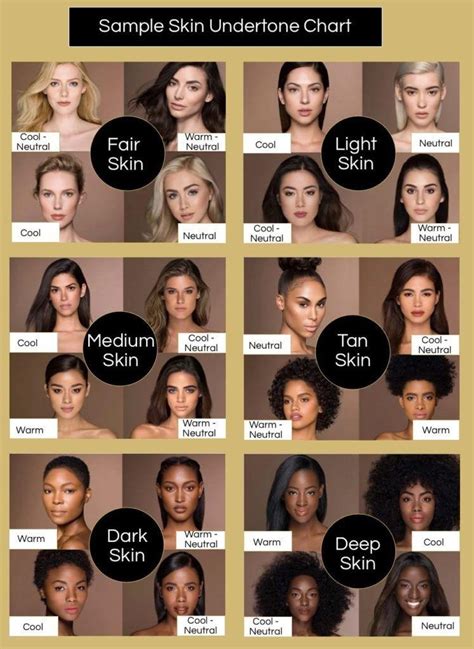Introduction
Finding the perfect hair color to complement your skin tone can be a daunting task. With so many shades and undertones to choose from, it’s easy to get overwhelmed. This comprehensive best hair color for skin tone chart will guide you through the process, helping you determine the most flattering hues for your individual complexion.

Skin Tone Basics
Before selecting a hair color, it’s crucial to understand your skin tone. Skin tone refers to the natural color and undertone of your skin. There are three main skin tone categories:
- Warm Skin Tones: Characterized by golden, peachy, or yellow undertones.
- Cool Skin Tones: Exhibit pink, red, or bluish undertones.
- Neutral Skin Tones: A blend of warm and cool undertones, creating a balanced complexion.
The Best Hair Color for Warm Skin Tones
Warm skin tones often look best with hair colors that enhance their golden undertones. These shades include:
- Golden Blondes: Honey blonde, caramel blonde, and buttery blonde
- Warm Brunettes: Chestnut brown, chocolate brown, and mahogany
- Reddish Browns: Auburn, copper, and burgundy
The Best Hair Color for Cool Skin Tones
Cool skin tones suit hair colors that complement their pink or bluish undertones. Ideal shades for cool skin tones include:
- Ash Blondes: Platinum blonde, ash blonde, and silvery blonde
- Cool Brunettes: Espresso brown, dark chocolate brown, and raven
- Black: Jet black and blue-black
The Best Hair Color for Neutral Skin Tones
Neutral skin tones have the flexibility to wear both warm and cool hair colors. They can experiment with shades that either emphasize their warm or cool undertones or create a balanced look by choosing neutral shades.
- Warm Shades: Golden blonde, caramel brown, and reddish auburn
- Cool Shades: Ash blonde, espresso brown, and black
- Neutral Shades: Chocolate brown, golden brown, and medium blonde
How to Determine Your Skin Tone
There are several ways to determine your skin tone:
- Vein Test: Look at the veins on the inside of your wrist. If they appear green, you likely have a warm skin tone. If they appear blue or purple, you have a cool skin tone.
- Jewelry Test: Cool skin tones typically look better with silver jewelry, while warm skin tones complement gold jewelry.
- Sunlight Response: Do you sunburn easily or tan quickly? Sunburn sensitivity indicates cool undertones, while tanning ability suggests warm undertones.
Common Mistakes to Avoid
- Choosing Hair Colors That Are Too Dark or Too Light: Extreme hair colors can overpower your complexion or wash you out.
- Matching Your Hair Color to Your Clothing: Hair color should complement your skin tone, not your wardrobe.
- Ignoring Your Hair’s Natural Color: Drastic hair color changes can damage your hair and make upkeep challenging.
Benefits of Choosing the Right Hair Color
- Enhances Your Natural Beauty: The right hair color can highlight your skin tone and features.
- Boosts Confidence: A flattering hair color can make you feel more confident and attractive.
- Creates a Polished Appearance: Well-chosen hair color can create a sophisticated and polished look.
Drawbacks of Choosing the Wrong Hair Color
- Unflattering Results: An unsuitable hair color can clash with your skin tone and make you look washed out or uneven.
- Hair Damage: Frequent hair coloring can damage your hair, leading to breakage and dryness.
- Expensive Upkeep: Maintaining a hair color that requires frequent touch-ups can be costly.
Frequently Asked Questions (FAQs)
-
Can I change my hair color to make my skin look lighter or darker?
– Yes, but only slightly. Hair color cannot significantly alter your skin tone. -
How often should I touch up my hair color?
– The frequency of touch-ups depends on the hair color and your natural hair color. Typically, touch-ups are needed every 4-8 weeks. -
What if I’m not sure what skin tone I have?
– Consult a professional hairstylist or use online skin tone analysis tools to determine your skin tone accurately. -
Can I dye my hair at home?
– Home hair coloring can be risky. It’s recommended to seek professional guidance from a hairstylist to avoid damaging your hair or achieving unsatisfactory results. -
What if I have gray hair?
– Gray hair can be blended or covered with hair dye specifically designed for gray coverage. -
Can hair color affect my hair texture?
– Yes, hair coloring can alter the texture of your hair. Chemical processing can weaken the hair shaft, making it more prone to breakage and frizziness. -
What are the long-term effects of hair coloring?
– Long-term hair coloring can damage the hair over time, leading to dryness, breakage, and thinning. -
Can I use hair color to hide my hair loss?
– Hair color can temporarily camouflage hair loss but does not address the underlying cause.
